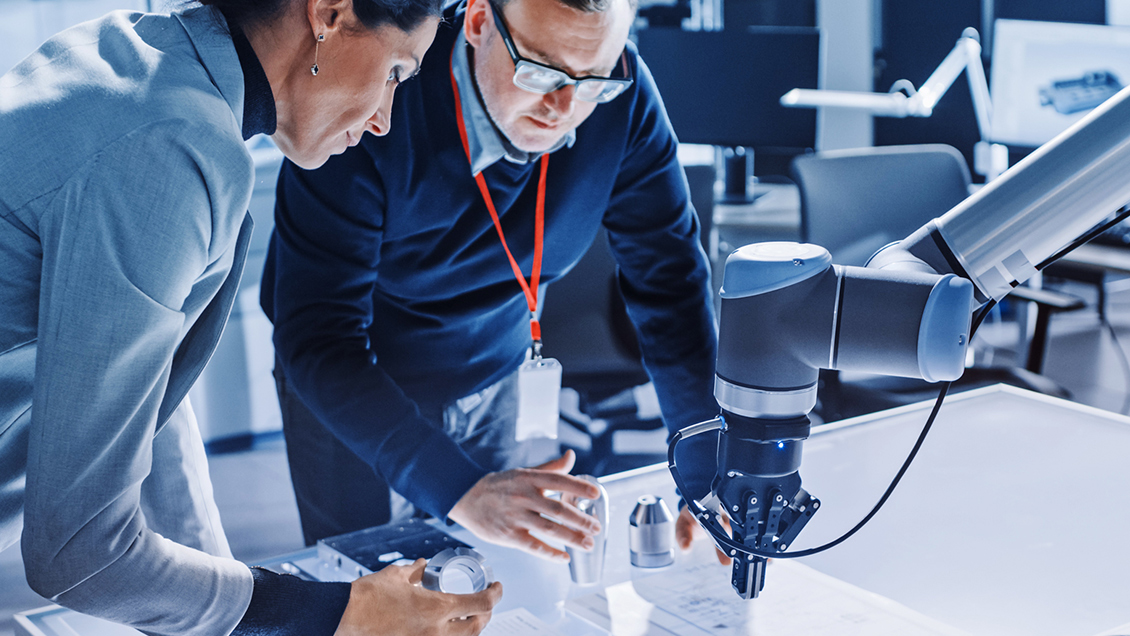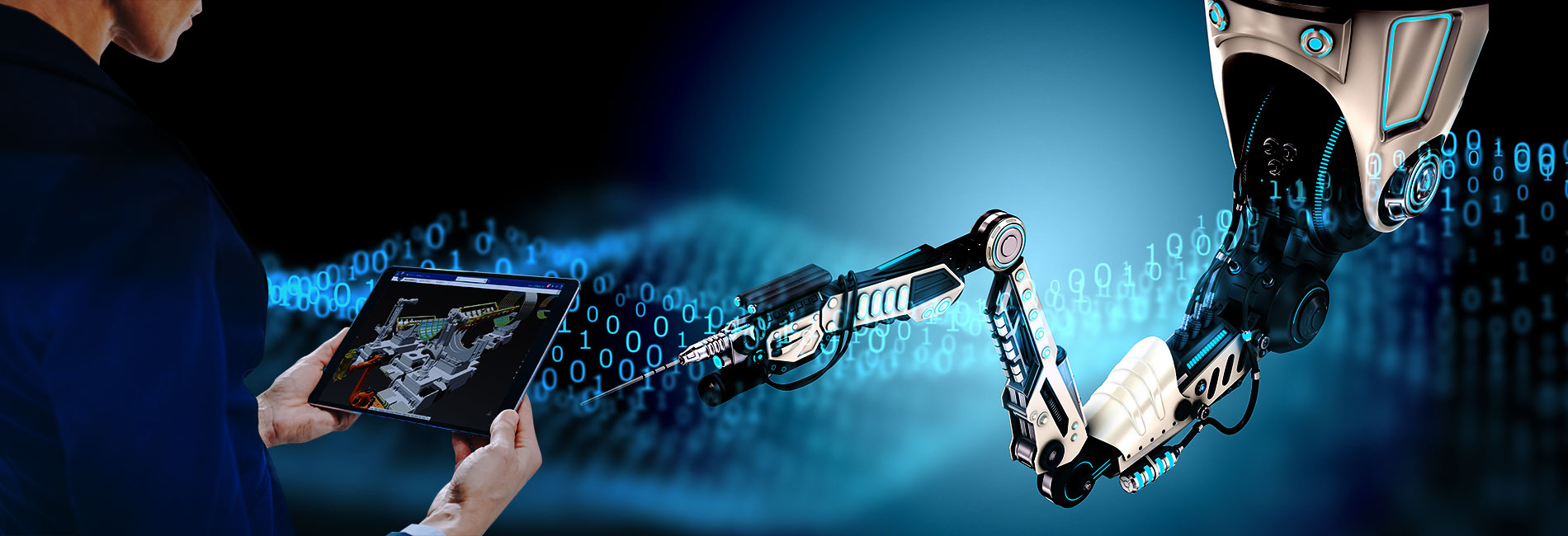The Future of Robotics in Manufacturing: Automation and Intelligence in Supply Chain
Industrial robotics and automation can help unlock the full potential of supply chains. Learn more about the platform that brings all these technologies into a unified solution.
Powering the Future of Robotics
The future of robotics in manufacturing is bright. The market for industrial robotics has been increasing by double digits annually since 2012, and South Korea leads as one of the world’s top adopters of robotics with 710 robots per 10,000 workers1.
This growth is helped, in part, by sustained advancement and innovation in robotics technologies and the availability of robotics engineering skills. Simulation and virtual validation enable testing of various robot applications, streamlining the required engineering tasks and the time taken to perform them.
When coupled with digitalization and other forms of automation, manufacturers can make their production activities more flexible, adaptable and resilient for business continuity.
Advances in robotics
Will be further accelerated by new technologies that have the potential to unlock even more manufacturing value. Some of these technologies include:
- The Industrial Internet of Things (IIoT)
A network of manufacturing equipment, devices, operations, people and data, connected to the internet and communicating with each other. This sharing of data delivers information intelligence that drives smarter, faster business decisions.
- 5G
5G provides continuous real-time connectivity with ultra-reliable low latency and high throughput. This enables fast and reliable data transmission from sensors on robots and the rest of the smart factory for real-time data analysis.
- Virtual simulation
Robot programmers and controls engineers can simulate and validate industrial robot behavior in a virtual environment. They can also take it one step further and simulate the interoperability of products, tools, robots and people in the workspace.
- Virtual platforms
A platform approach helps manufacturers to maximize flexibility and economies of scale in their industrial automation strategies2. Processes can be standardized, applied and reused in multiple applications. This simplifies programming, maintenance and product support.

New Opportunities for Growth
Even though robotics has the potential to reshape global supply chains, there are still areas in the supply chain ripe for further deployment and growth:
- Product assembly
Robots are currently widely used for component manufacturing. However, a potential area of expansion is in product assembly. Before this, robots used to lack the dexterity needed to replace human hands. But with technologies like the multi-axis arm movement, human dexterity can be replicated with robotic equipment. They can also be quickly reconfigured to support today’s shorter product life cycles. This improves efficiency and reduces production time. - Mass customization
Modular robots — with components that can be switched for different tasks — are ushering in mass customization as the new norm in manufacturing. While each product is still made to order, the production efficiency is still kept at a level similar to mass production. The increased dexterity brings the same level of personalization as human-made bespoke orders, but on a much larger scale and at more sustainable costs. - Robots as a Service (RaaS)
RaaS is a pay-as-you-use subscription-based service model that allows customers to lease robots. This provides them with all the benefits of robotics process automation while avoiding ownership headaches such as maintenance issues3. The flexibility of the RaaS model also provides manufacturers with a lower cost of entry compared to traditional robotics implementations.
Harnessing the Full Value of Robotics
Although robots are widely used in manufacturing, the planning is often less than optimal. Businesses may not get the full value of the robots and the people who interact with them. Changes in products and processes can also delay product updates and improvements while robots are reprogrammed and tested.
With the technologies and solutions supported by an integrated platform, manufacturers are empowered to simulate new and existing production processes within an entirely virtual environment. This helps them design and deliver optimized robotics solutions fit for the shop floor.
An integrated platform gives manufacturers the flexibility to define robotic work cells, program and optimize the robots and, ultimately, simulate the entire manufacturing environment and product flow. As a result, they can validate production concepts, reduce cycle times and improve all aspects of implementing and programming robot systems and tools.
This platform — the 3DEXPERIENCE® platform — enables manufacturers to realize and benefit from the full potential of robotics and automation in manufacturing. They can design, install and ramp up robotics systems with confidence that they will perform as designed. As a result, they can reduce operational costs, increase productivity and efficiency, avoid costly mistakes, and ultimately transform their operations.
Experience the Full Value of Robotics
Download our ebook for a deep dive into the new technologies, applications and industries that are poised to transform the manufacturing industry for years to come.
Read our top articles on Manufacturing Workforce
Explore our Industry Solution Experiences
Learn more about how our industry solutions can help you to achieve your professional ambition and business objectives
